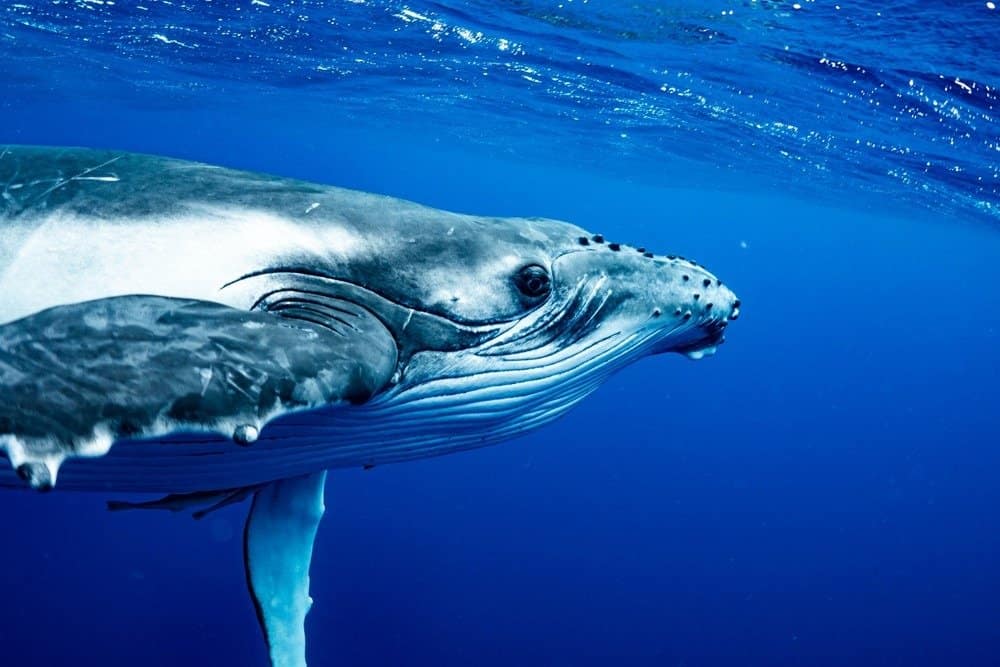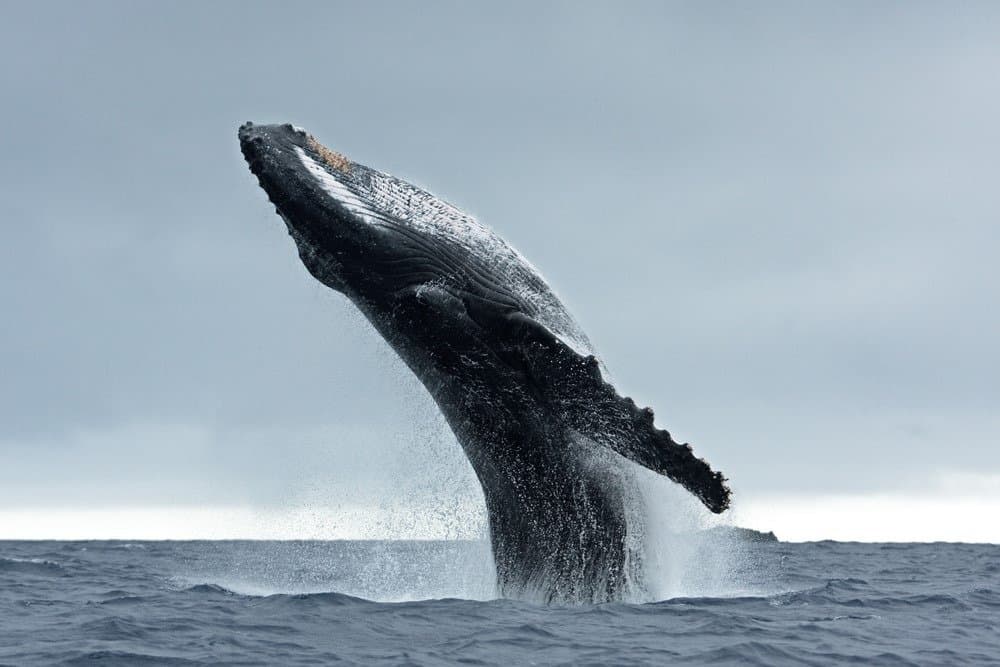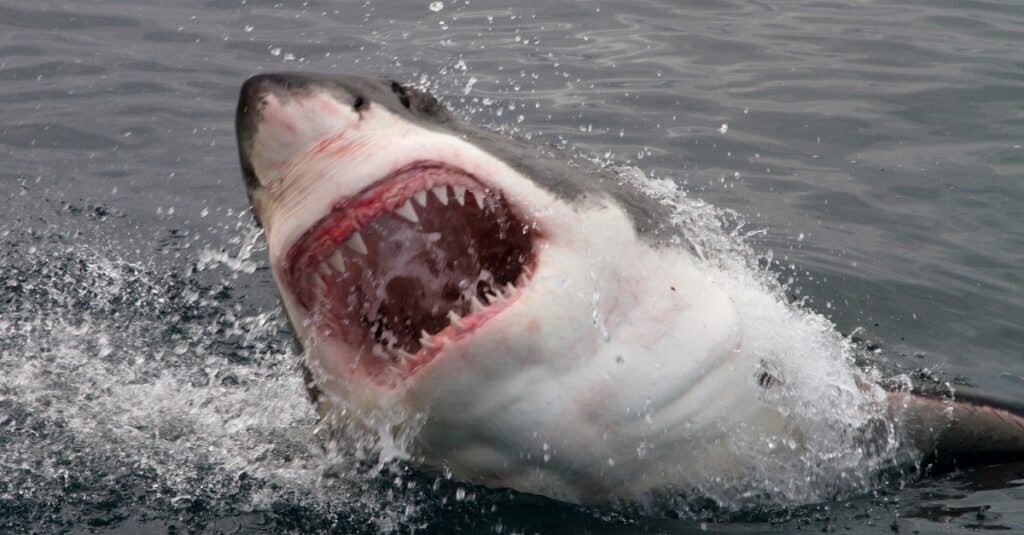Humpback whales are vast, beautiful mammals that live in the ocean. They are named for the humps on their backs and renowned for their breaching behaviors. These massive whales regularly reach 50 feet in length and weigh between 40 and 100 tons. Their massive size begs the question, what do humpback whales eat? After all, they have to maintain their large size and propel themselves through the ocean water, and that requires a lot of energy.
We’re going to explore the most common foods eaten by humpback whales along with how they find their food and whether they pose a threat to humans on the open seas.
What Foods Do Humpback Whales Eat?

Humpback whales eat plankton, fish, and crustaceans. They are omnivores that eat animals and plant matter as part of their diets. These massive creatures must consume a lot of food each day as part of their extensive diet.
Some of the foods that humpback whales eat are:
These are the most common foods that humpback whales eat in the ocean. Humpback whales are roughly the size of a school bus, and the average humpback whale will eat between 3,000 and 5,000 pounds of food each day. However, most of the foods on this list are very small.
When you consider that the average krill, a staple in their diet, is only 2 inches long, it becomes clear that these whales have to gobble vast amounts of creatures to meet their dietary needs.
How Do Humpback Whales Hunt?

Humpback whales hunt by corralling and eating their prey or filter-feeding alone.
©Earth theater/Shutterstock.com
As we have already said, humpback whales need to eat a lot of food each day to maintain proper nutrition and the energy levels needed to move their giant bodies. How do they find and eat enough krill and other small fish to make that possible? It’s a fair question, and it becomes even more interesting when you add in the fact that these whales are hard to miss from a prey’s point of view.
Humpback whales can hunt together as a pod and partake in a process called “bubble netting.” Basically, a group of whales will surround a school of fish from below and begin to blow bubbles, forming a vertical cylinder ring that makes the fish tighten their formation.
Once the fish are properly corralled, the whales will take turns swimming through the fish and gobbling them up. The whales themselves use a filter-feeding method to capture the available fish in the bristles of their mouths while filtering out the water.
Bubble netting is just one possibility for humpback whales looking for a meal. Sometimes, the whales will corral their prey using their fins and feed on the group solo.
Humpback whales are incredibly successful hunters, consuming thousands of pounds of food each day in the warmer months so they can build up blubber stores to last through winter.
What Do Baby Humpback Whales Eat?

Baby humpback
whales drink milk
for the first several months of their lives.
©iStock.com/CoreyFord
Humpback whales are mammals that give birth to live young after a long gestation period that takes almost a full year. The babies, called calves, weigh over a thousand pounds when they are born, but they are not quite ready to assume the same eating patterns as their mothers.
For the first 8 months to a year of their lives, the calves will receive milk from their mother. Unlike other mammals, the calf does not latch to the mother. Instead, the whale will position itself at a 30–45-degree angle from its other’s mammary glands, and the mother will squirt the thick, yogurt-like milk into the baby’s mouth.
This milk is made from 40 to 60% fat, and the calf can drink upwards of 150 gallons of milk each day. During this first year, the young whale will continue to grow almost a foot in length per month. However, they are weaned after about seven months in most cases.
Are Humpback Whales Dangerous to Humans?

Humpback whales are gentle creatures with little interest in humans.
©Martin Prochazkacz/Shutterstock.com
The humpback whale’s massive size is enough to inspire fear in people. That has led many to ask the question, can a humpback whale kill a person?
Humpback whales are rather intelligent creatures that are not overly aggressive. Their massive size scares off just about every predator because a simple smack from their tail could put an end to many sea-dwellers.
Nevertheless, stories have emerged where humpback whales have “swallowed” human beings, including one where a lobster diver was gobbled up by a humpback whale and spit out at the surface.
However, in this case, and probably every other one where someone was “swallowed”, they were actually kept in the whale’s mouth until it realized they had caught a non-prey animal. Humpback whales’ throats are not large enough to swallow a person. Thus, the case of the diver was an accidental engulfing instead of an attempt at killing, and the individual was certainly not swallowed.
In the strictest sense, a whale could kill a human, but they are not a true danger to people unless a freak accident occurs.
What Predators Eat Humpback Whales?

With a bit of luck, skill, or a lot of friends, a great
white shark
can kill a humpback whale.
©iStock.com/Peter_Nile
Humpback whales are protected from most predators by their vast size. The majority of creatures in the ocean simply could not hope to kill a humpback whale, even a young one, without a serious risk of injury or death.
As with any creatures, though, some animals do kill and eat humpback whales, even if it is a rare occasion. Consider the following humpback whale predators:
These creatures have the best chance of killing a whale. Many whaling practices by humans have been outlawed, but human hunting, shipping, and polluting kill whales. In the case of orcas, tiger sharks, and the great white shark, they can all kill a humpback whale. However, they will need either incredible wits and luck or a group of friends to take them down.
All it would take is the humpback to land a strike with a tail, and most of those creatures would die, though. Some cases have emerged where a single shark has hunted a lone whale, inflicting too many bites for the whale to overcome. That is very rare, though.
The humpback whale is a creature with a large and varied appetite. These omnivores subsist mainly on krill and other small fish, but they also filter-feed a lot of plankton and mollusks, too. Although they are very big, they do not pose a threat to humans. In fact, the opposite is true as humans are still the primary threat to these whales today.
The photo featured at the top of this post is © Claude Huot/Shutterstock.com
Thank you for reading! Have some feedback for us? Contact the AZ Animals editorial team.






